7.200.000 EUR
6 qt
514 m²
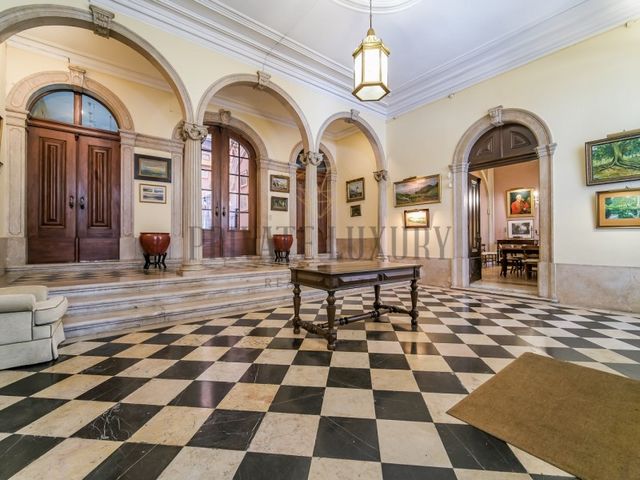
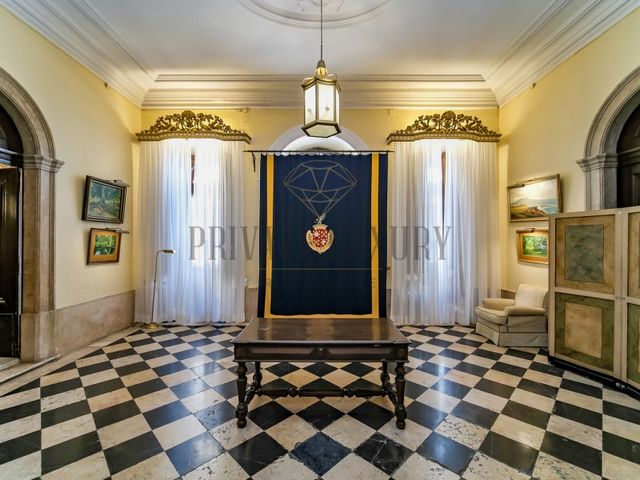
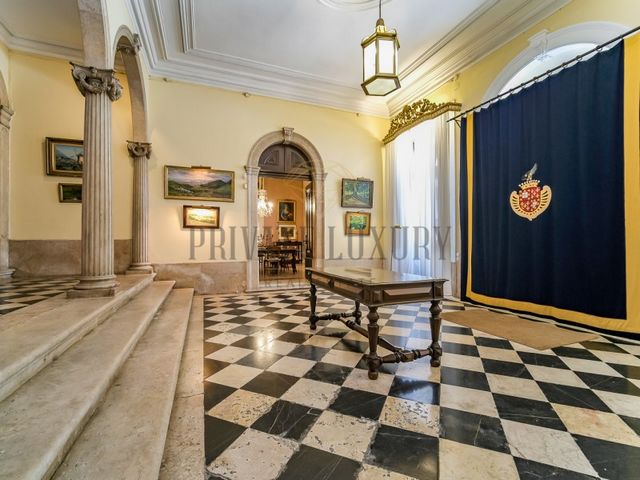
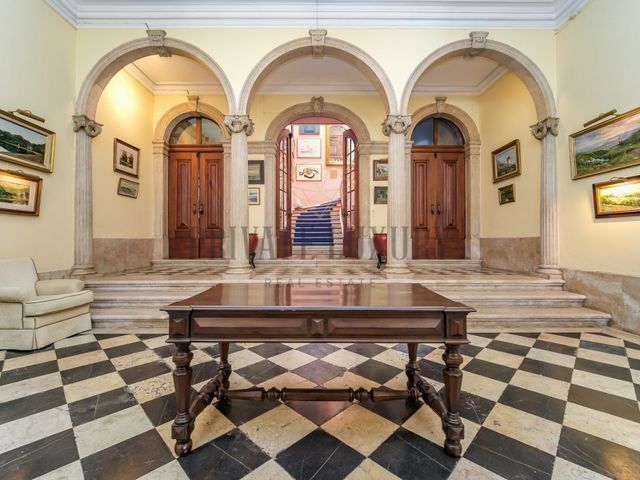



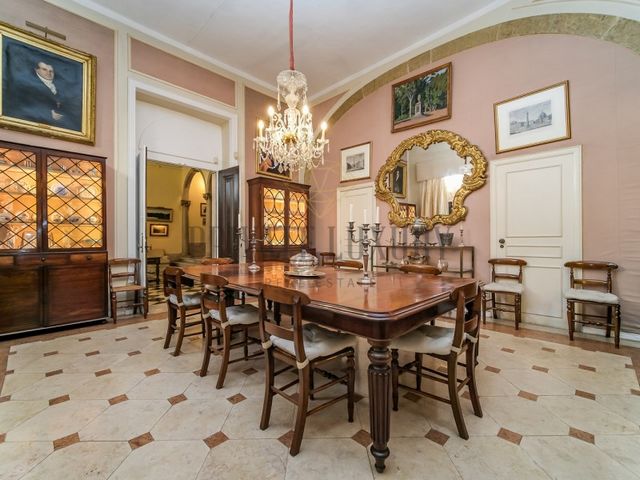



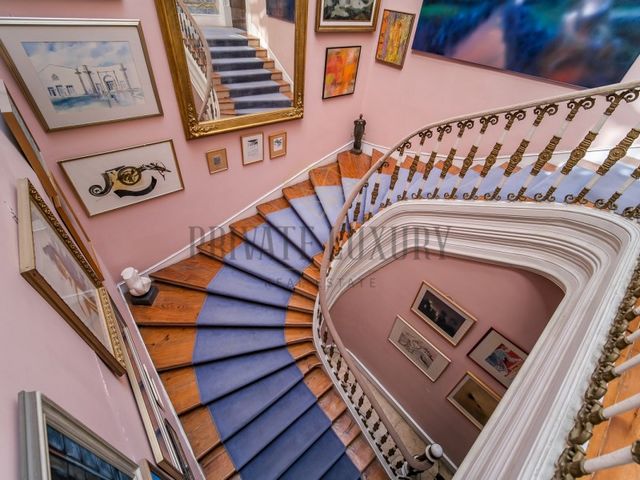
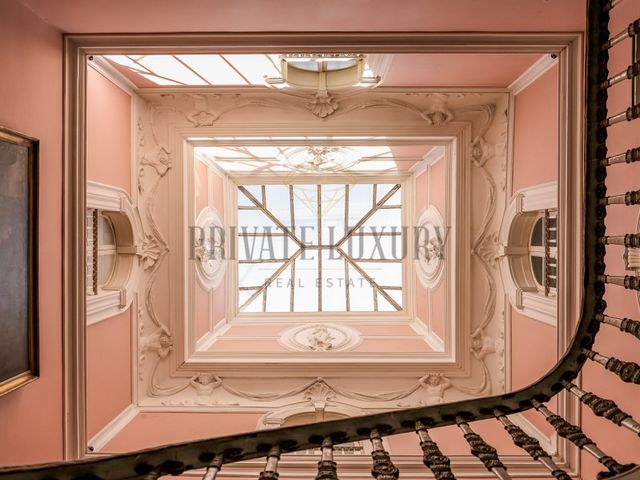

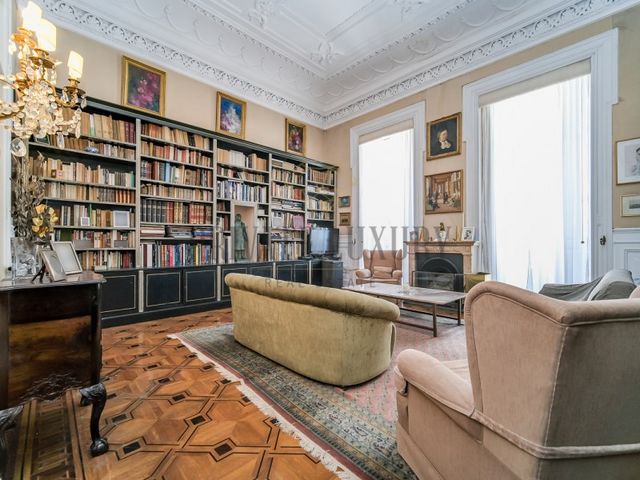



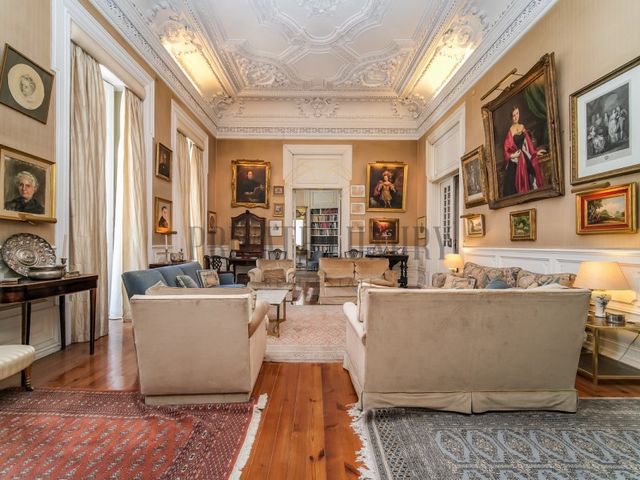


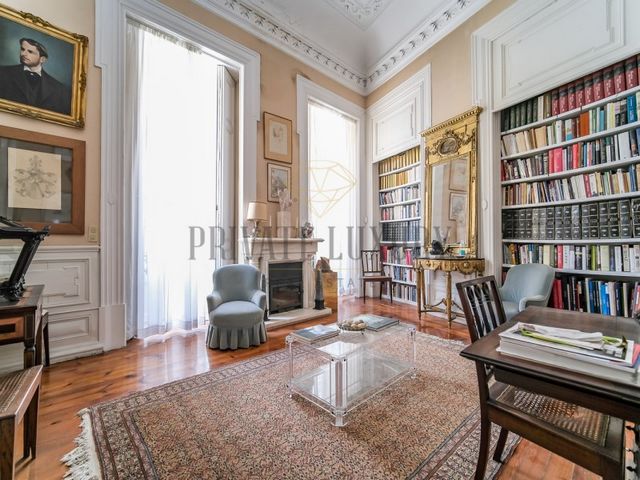

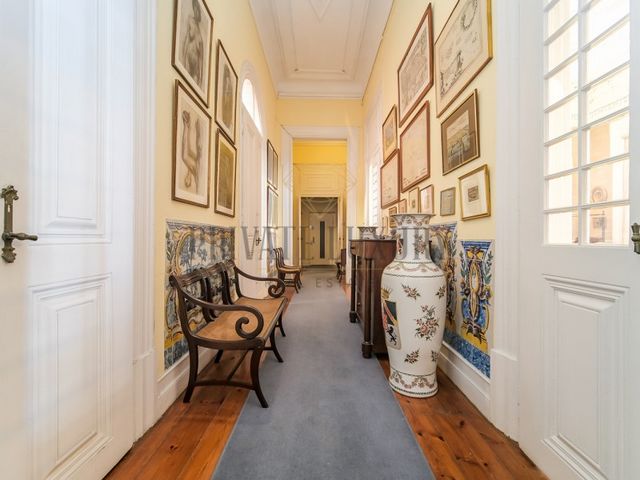


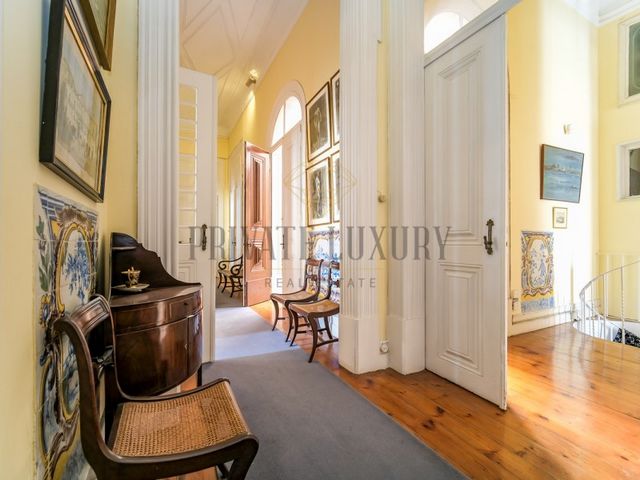

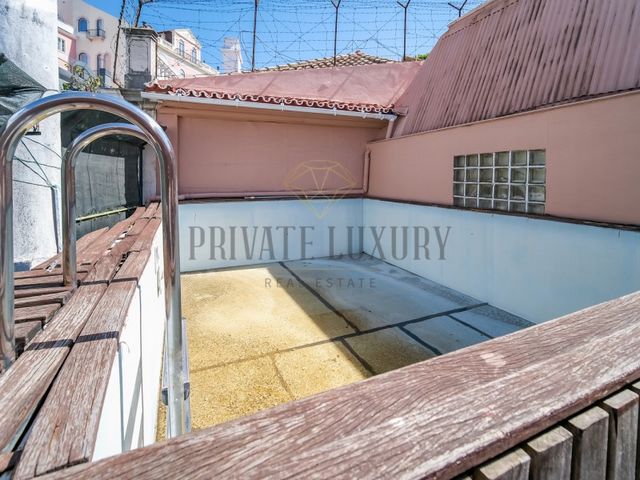



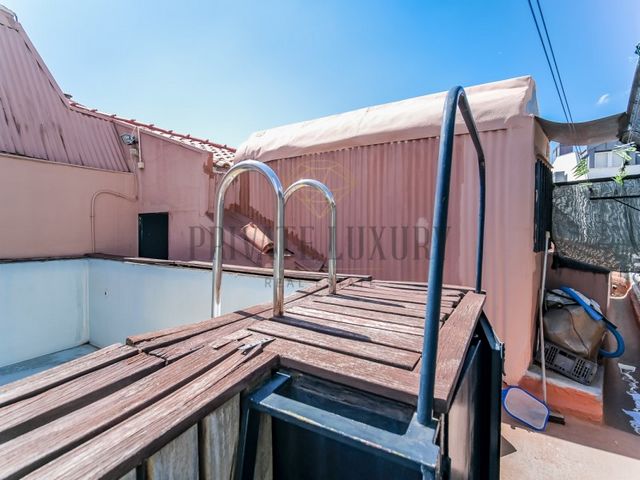
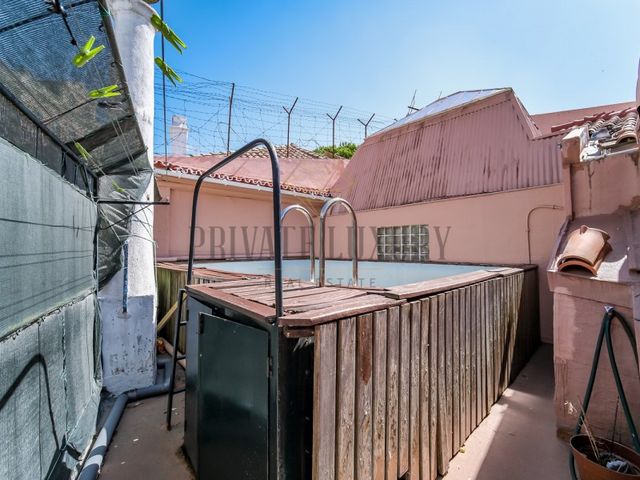

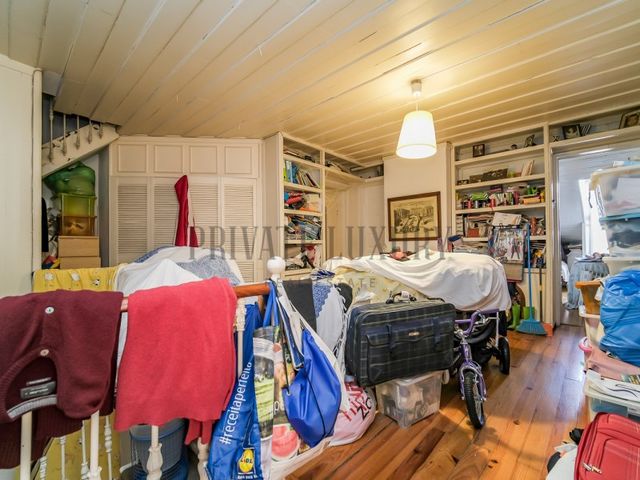
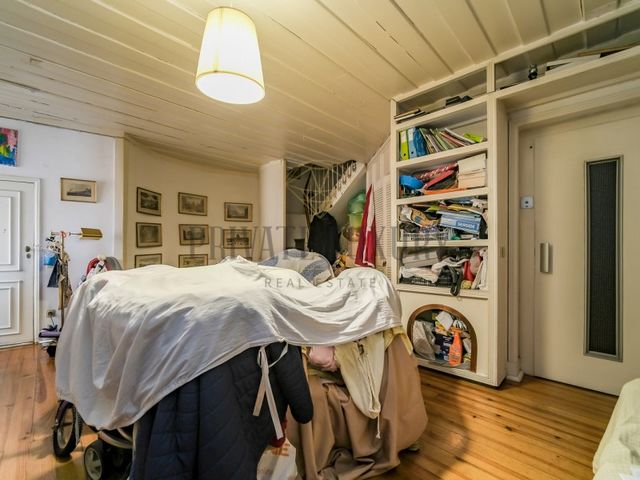

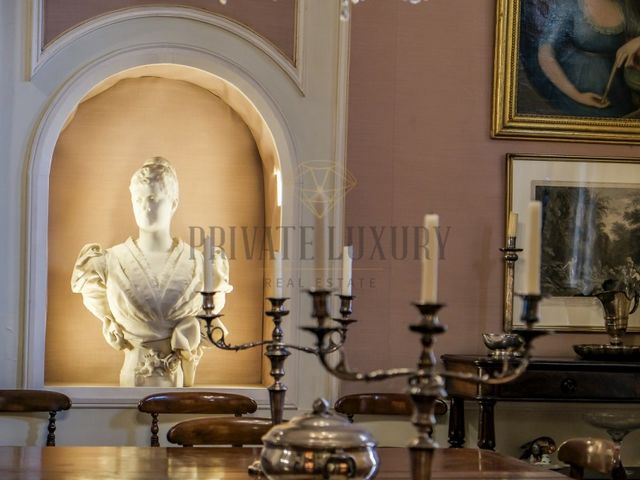
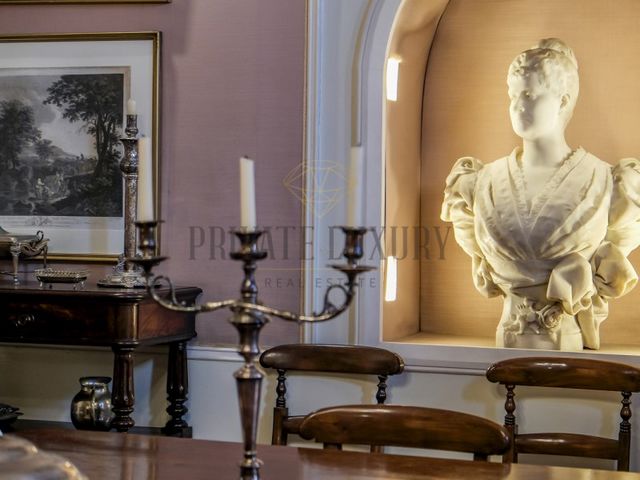




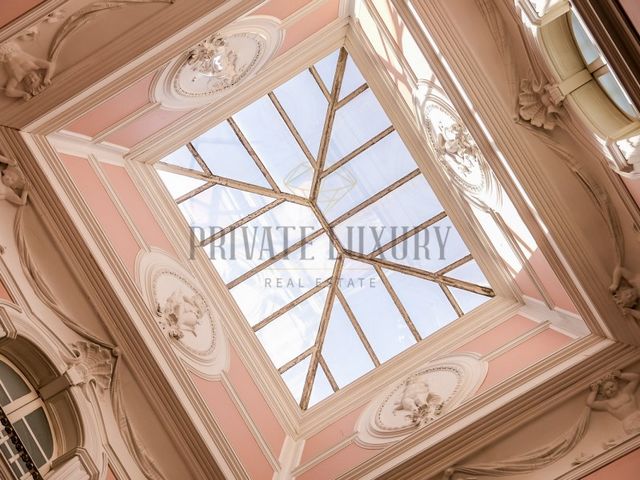
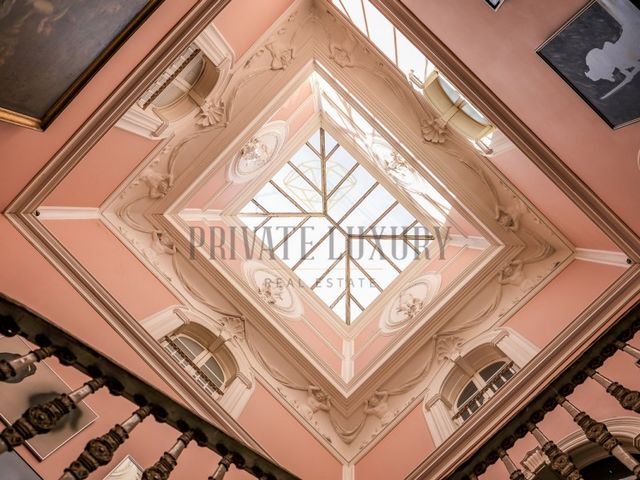
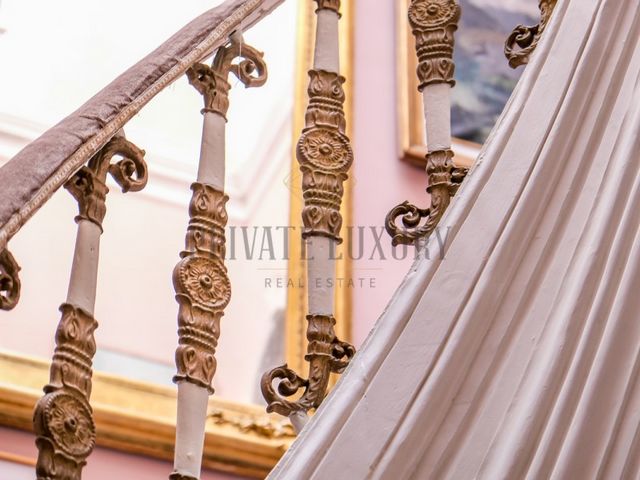
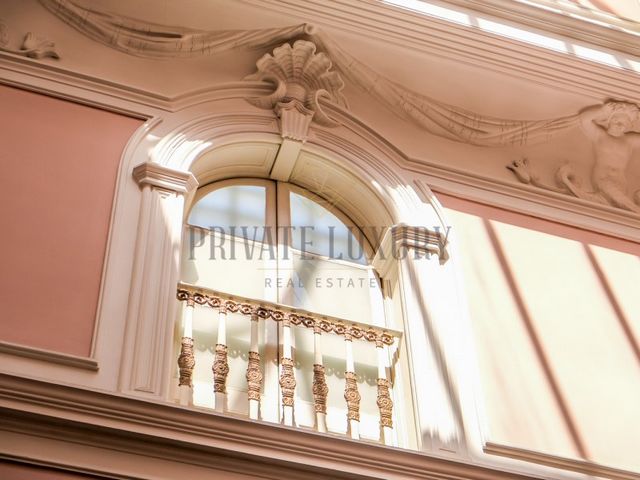



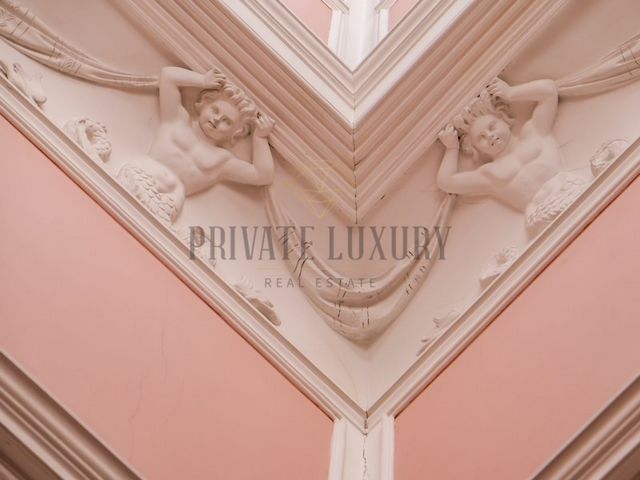

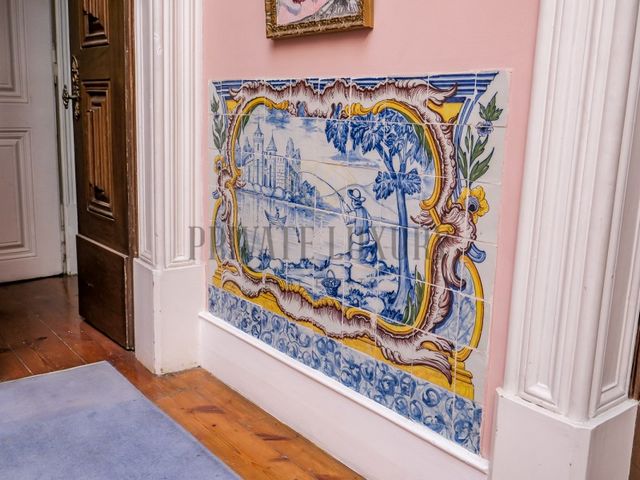
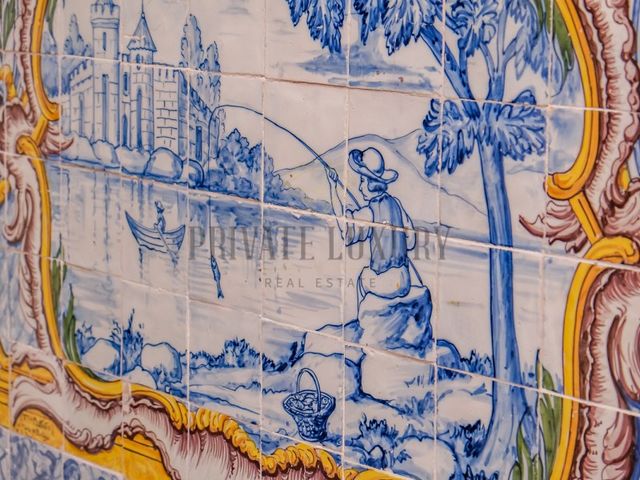

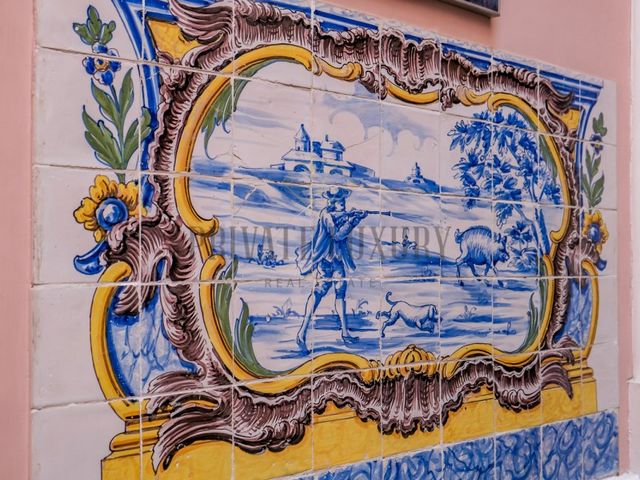




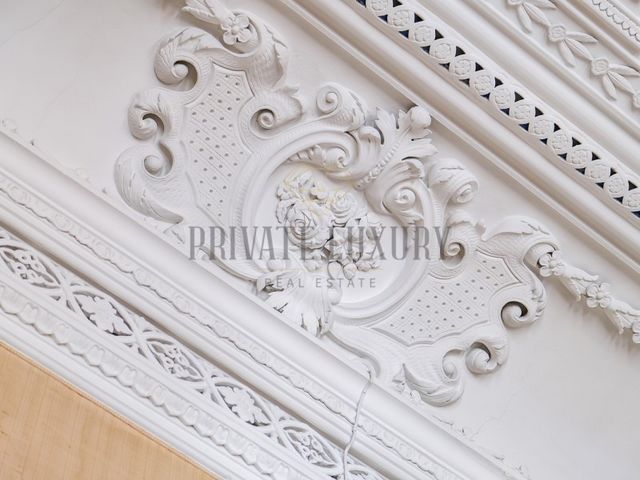

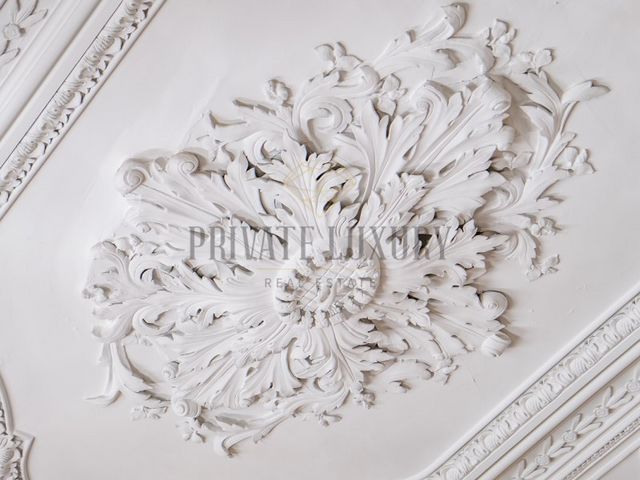




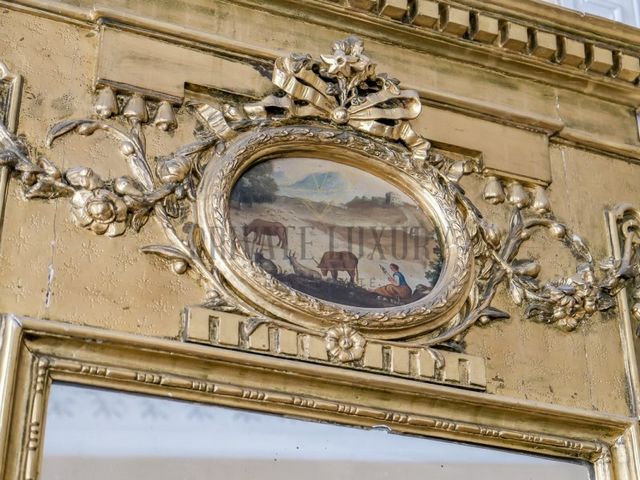
Amplo hall de entrada, sala de jantar com acesso direto á cozinha e copa, um escritório e um apartamento com 66m2 entrada independente e que poderá também ser utilizado como garagem para 3 viaturas.O Acesso ao 1º andar
uma bela escadaria, iluminada por uma claraboia que permite a entrada de luz natural.1º andar
É a zona social por excelência, 3 amplas salas de estar, 2 quartos e 1 wc.O 2º andar
3 quartos, uma sala privativa, 2 Wc completos e terraço com 28m2, e um espaço exterior com uma pequena piscina.As águas furtadas
uma suíte, com acesso a um varandim com vista desafogada sobre a cidade.Todos os pisos com acesso por elevador.Neoclassicismo em Portugal Devido ao fator de um surgimento numa época muito conturbada, o Neoclassicismo em Portugal desenvolve-se de modo muito próprio, debatendo-se com problemas de ordem artística e econômica, impondo uma periodização diferente do resto da Europa. Assiste-se muito cedo ao desenvolvimento de uma arquitetura pré-clássica, que permanece durante todo o final do século XVIII. Na segunda metade do século, um pouco mais tarde que no resto da Europa, surge, principalmente em Lisboa e Porto, o Neoclassicismo, para, no início do século XIX, se assistir a uma quase paragem dos programas artísticos. Este facto deve-se à grande instabilidade provocada por uma sucessão de acontecimentos avassaladores para o país, nomeadamente a fuga da família real para o Brasil em 1807 (facto de importância fundamental para os dois países), invasões francesas, posterior/consequente domínio inglês, revolução liberal em 1820, regresso da família real em 1821, independência do Brasil e a perda do comércio colonial em 1822. Pouco depois ocorre a contra revolução absolutista, originando as guerras liberais, o que mantém a instabilidade até 1834, permitindo o normal desenvolvimento artístico e econômico apenas quase a meio do século. Em face do exposto não é de admirar que o estilo permaneça, a par do Romantismo, até ao início do século XX.
Categoria Energética: E
#ref:8119 DA Veja mais Veja menos Palace/ Principe Real/ LisbonExcellent location in one of the most charming neighborhoods of Lisbon, near Praça do Príncipe Real, Neoclassical palace in very good condition, with 685m2, divided by three floors. Noble materials and finishes, woods from Brazil, marbles, tiles, high ceilings and worked make this house a unique space.Ground floor,
Large entrance hall, dining room with direct access to the kitchen and pantry, an office and an apartment with 66m2 independent entrance and that can also be used as a garage for 3 cars.Access to the 1st floor
A beautiful staircase, illuminated by a skylight that lets in natural light.Floor 1
It is the social area par excellence, 3 large living rooms, 2 bedrooms and 1 bathroom.The 2nd floor
3 bedrooms, a private room, 2 full bathrooms and terrace with 28m2. The stolen waters
a suite, with access to a balcony with unobstructed views over the city.Elevator access on all floorsNeoclassicism in Portugal Due to the factor of an emergence in a very troubled time, Neoclassicism in Portugal develops in its own way, struggling with problems of an artistic and economic order, imposing a periodization different from the rest of Europe. In the second half of the century, a little later than in the rest of Europe, Neoclassicism emerged, especially in Lisbon and Porto, and in the early nineteenth century there was a near halt in artistic programs. This fact is due to the great instability caused by a succession of overwhelming events for the country, namely the flight of the royal family to Brazil in 1807 (a fact of fundamental importance for both countries), French invasions, later/consequent English rule, liberal revolution in 1820, return of the royal family in 1821, independence from Brazil and the loss of colonial trade in 1822. Shortly afterwards the absolutist counter-revolution took place, giving rise to the liberal wars, which maintained the instability until 1834, allowing the normal artistic and economic development only almost in the middle of the century. In view of the above, it is no wonder that the style remains, along with Romanticism, until the early twentieth century.
Energiekategorie: E
#ref:8119 DA Palacio/ Príncipe Real/ LisboaExcelente ubicación en uno de los barrios con más encanto de Lisboa, cerca de Praça do Príncipe Real, Palacio neoclásico en muy buen estado, con 685m2, divididos en tres plantas. Materiales nobles y acabados, maderas de Brasil, mármoles, azulejos, techos altos y trabajados hacen de esta casa un espacio único.Planta baja
Amplio hall de entrada, comedor con acceso directo a la cocina y despensa, un despacho y un apartamento con entrada independiente de 66m2 y que también se puede utilizar como garaje para 3 coches.Acceso a la 1ª planta
Una hermosa escalera, iluminada por una claraboya que deja entrar la luz natural.Planta 1
Es el área social por excelencia, 3 amplios salones, 2 dormitorios y 1 baño.La 2ª planta
3 dormitorios, una habitación privada, 2 baños completos y terraza con 28m2. Las aguas robadas
Una suite, con acceso a un balcón con vistas despejadas sobre la ciudad.Acceso por ascensor en todas las plantasNeoclasicismo en Portugal Debido al factor de una aparición en un momento muy problemático, el neoclasicismo en Portugal se desarrolla a su manera, luchando con problemas de orden artístico y económico, imponiendo una periodización diferente del resto de Europa. En la segunda mitad del siglo, un poco más tarde que en el resto de Europa, surgió el neoclasicismo, especialmente en Lisboa y Oporto, y a principios del siglo XIX hubo una casi interrupción en los programas artísticos. Este hecho se debe a la gran inestabilidad causada por una sucesión de acontecimientos abrumadores para el país, a saber, la huida de la familia real a Brasil en 1807 (un hecho de importancia fundamental para ambos países), las invasiones francesas, el posterior dominio inglés, la revolución liberal en 1820, el regreso de la familia real en 1821, la independencia de Brasil y la pérdida del comercio colonial en 1822. Poco después tuvo lugar la contrarrevolución absolutista, dando lugar a las guerras liberales, que mantuvieron la inestabilidad hasta 1834, permitiendo el desarrollo artístico y económico normal sólo casi a mediados de siglo. En vista de lo anterior, no es de extrañar que el estilo se mantenga, junto con el Romanticismo, hasta principios del siglo XX.
Categoría Energética: E
#ref:8119 DA Palace/ Principe Real/ LisbonneExcellent emplacement dans l'un des quartiers les plus charmants de Lisbonne, près de la Praça do Príncipe Real, Palais néoclassique en très bon état, avec 685m2, divisé par trois étages. Matériaux nobles et finitions, bois du Brésil, marbres, carreaux, hauts plafonds et travaillés font de cette maison un espace unique.Rez-de-chaussée
Grand hall d'entrée, salle à manger avec accès direct à la cuisine et au cellier, un bureau et un appartement avec entrée indépendante de 66m2 et pouvant également être utilisé comme garage pour 3 voitures.Accès au 1er étage
Un bel escalier, éclairé par un puits de lumière qui laisse entrer la lumière naturelle.Étage 1
C'est l'espace social par excellence, 3 grands salons, 2 chambres et 1 salle de bain.Le 2ème étage
3 chambres, une salle privée, 2 salles de bain complètes et terrasse avec 28m2. Les eaux volées
Une suite, avec accès à un balcon avec vue imprenable sur la ville.Accès par ascenseur à tous les étagesNéoclassicisme au Portugal En raison du facteur d'une émergence dans une période très troublée, le néoclassicisme au Portugal se développe à sa manière, aux prises avec des problèmes d'ordre artistique et économique, imposant une périodisation différente du reste de l'Europe. Dans la seconde moitié du siècle, un peu plus tard que dans le reste de l'Europe, le néoclassicisme a émergé, en particulier à Lisbonne et à Porto, et au début du XIXe siècle, il y a eu un quasi-arrêt des programmes artistiques. Ce fait est dû à la grande instabilité causée par une succession d'événements accablants pour le pays, à savoir la fuite de la famille royale au Brésil en 1807 (un fait d'une importance fondamentale pour les deux pays), les invasions françaises, la domination anglaise ultérieure / conséquente, la révolution libérale en 1820, le retour de la famille royale en 1821, l'indépendance du Brésil et la perte du commerce colonial en 1822. Peu de temps après, la contre-révolution absolutiste a eu lieu, donnant lieu aux guerres libérales, qui ont maintenu l'instabilité jusqu'en 1834, ne permettant le développement artistique et économique normal que presque au milieu du siècle. Compte tenu de ce qui précède, il n'est pas étonnant que le style reste, avec le romantisme, jusqu'au début du XXe siècle.
Performance Énergétique: E
#ref:8119 DA Palace/ Principe Real/ LisbonExcellent location in one of the most charming neighborhoods of Lisbon, near Praça do Príncipe Real, Neoclassical palace in very good condition, with 685m2, divided by three floors. Noble materials and finishes, woods from Brazil, marbles, tiles, high ceilings and worked make this house a unique space.Ground floor,
Large entrance hall, dining room with direct access to the kitchen and pantry, an office and an apartment with 66m2 independent entrance and that can also be used as a garage for 3 cars.Access to the 1st floor
A beautiful staircase, illuminated by a skylight that lets in natural light.Floor 1
It is the social area par excellence, 3 large living rooms, 2 bedrooms and 1 bathroom.The 2nd floor
3 bedrooms, a private room, 2 full bathrooms and terrace with 28m2. The stolen waters
a suite, with access to a balcony with unobstructed views over the city.Elevator access on all floorsNeoclassicism in Portugal Due to the factor of an emergence in a very troubled time, Neoclassicism in Portugal develops in its own way, struggling with problems of an artistic and economic order, imposing a periodization different from the rest of Europe. In the second half of the century, a little later than in the rest of Europe, Neoclassicism emerged, especially in Lisbon and Porto, and in the early nineteenth century there was a near halt in artistic programs. This fact is due to the great instability caused by a succession of overwhelming events for the country, namely the flight of the royal family to Brazil in 1807 (a fact of fundamental importance for both countries), French invasions, later/consequent English rule, liberal revolution in 1820, return of the royal family in 1821, independence from Brazil and the loss of colonial trade in 1822. Shortly afterwards the absolutist counter-revolution took place, giving rise to the liberal wars, which maintained the instability until 1834, allowing the normal artistic and economic development only almost in the middle of the century. In view of the above, it is no wonder that the style remains, along with Romanticism, until the early twentieth century.
Energy Rating: E
#ref:8119 DA Palace/ Principe Real/ LisbonExcellent location in one of the most charming neighborhoods of Lisbon, near Praça do Príncipe Real, Neoclassical palace in very good condition, with 685m2, divided by three floors. Noble materials and finishes, woods from Brazil, marbles, tiles, high ceilings and worked make this house a unique space.Ground floor,
Large entrance hall, dining room with direct access to the kitchen and pantry, an office and an apartment with 66m2 independent entrance and that can also be used as a garage for 3 cars.Access to the 1st floor
A beautiful staircase, illuminated by a skylight that lets in natural light.Floor 1
It is the social area par excellence, 3 large living rooms, 2 bedrooms and 1 bathroom.The 2nd floor
3 bedrooms, a private room, 2 full bathrooms and terrace with 28m2. The stolen waters
a suite, with access to a balcony with unobstructed views over the city.Elevator access on all floorsNeoclassicism in Portugal Due to the factor of an emergence in a very troubled time, Neoclassicism in Portugal develops in its own way, struggling with problems of an artistic and economic order, imposing a periodization different from the rest of Europe. In the second half of the century, a little later than in the rest of Europe, Neoclassicism emerged, especially in Lisbon and Porto, and in the early nineteenth century there was a near halt in artistic programs. This fact is due to the great instability caused by a succession of overwhelming events for the country, namely the flight of the royal family to Brazil in 1807 (a fact of fundamental importance for both countries), French invasions, later/consequent English rule, liberal revolution in 1820, return of the royal family in 1821, independence from Brazil and the loss of colonial trade in 1822. Shortly afterwards the absolutist counter-revolution took place, giving rise to the liberal wars, which maintained the instability until 1834, allowing the normal artistic and economic development only almost in the middle of the century. In view of the above, it is no wonder that the style remains, along with Romanticism, until the early twentieth century.
Energie Categorie: E
#ref:8119 DA Palácio sec. XIX Príncipe Real/ LisboaExcelente localização num dos bairros mais charmosos de Lisboa, próximo da Praça do Príncipe Real, Palacete Neoclássico em muito bom estado, com 685m2, dividido por três pisos. Materiais e acabamentos nobres, madeiras do Brasil, mármores, azulejos, tetos altos e trabalhados fazem desta casa um espaço único.Piso térreo,
Amplo hall de entrada, sala de jantar com acesso direto á cozinha e copa, um escritório e um apartamento com 66m2 entrada independente e que poderá também ser utilizado como garagem para 3 viaturas.O Acesso ao 1º andar
uma bela escadaria, iluminada por uma claraboia que permite a entrada de luz natural.1º andar
É a zona social por excelência, 3 amplas salas de estar, 2 quartos e 1 wc.O 2º andar
3 quartos, uma sala privativa, 2 Wc completos e terraço com 28m2, e um espaço exterior com uma pequena piscina.As águas furtadas
uma suíte, com acesso a um varandim com vista desafogada sobre a cidade.Todos os pisos com acesso por elevador.Neoclassicismo em Portugal Devido ao fator de um surgimento numa época muito conturbada, o Neoclassicismo em Portugal desenvolve-se de modo muito próprio, debatendo-se com problemas de ordem artística e econômica, impondo uma periodização diferente do resto da Europa. Assiste-se muito cedo ao desenvolvimento de uma arquitetura pré-clássica, que permanece durante todo o final do século XVIII. Na segunda metade do século, um pouco mais tarde que no resto da Europa, surge, principalmente em Lisboa e Porto, o Neoclassicismo, para, no início do século XIX, se assistir a uma quase paragem dos programas artísticos. Este facto deve-se à grande instabilidade provocada por uma sucessão de acontecimentos avassaladores para o país, nomeadamente a fuga da família real para o Brasil em 1807 (facto de importância fundamental para os dois países), invasões francesas, posterior/consequente domínio inglês, revolução liberal em 1820, regresso da família real em 1821, independência do Brasil e a perda do comércio colonial em 1822. Pouco depois ocorre a contra revolução absolutista, originando as guerras liberais, o que mantém a instabilidade até 1834, permitindo o normal desenvolvimento artístico e econômico apenas quase a meio do século. Em face do exposto não é de admirar que o estilo permaneça, a par do Romantismo, até ao início do século XX.
Categoria Energética: E
#ref:8119 DA Palace/ Principe Real/ LisbonExcellent location in one of the most charming neighborhoods of Lisbon, near Praça do Príncipe Real, Neoclassical palace in very good condition, with 685m2, divided by three floors. Noble materials and finishes, woods from Brazil, marbles, tiles, high ceilings and worked make this house a unique space.Ground floor,
Large entrance hall, dining room with direct access to the kitchen and pantry, an office and an apartment with 66m2 independent entrance and that can also be used as a garage for 3 cars.Access to the 1st floor
A beautiful staircase, illuminated by a skylight that lets in natural light.Floor 1
It is the social area par excellence, 3 large living rooms, 2 bedrooms and 1 bathroom.The 2nd floor
3 bedrooms, a private room, 2 full bathrooms and terrace with 28m2. The stolen waters
a suite, with access to a balcony with unobstructed views over the city.Elevator access on all floorsNeoclassicism in Portugal Due to the factor of an emergence in a very troubled time, Neoclassicism in Portugal develops in its own way, struggling with problems of an artistic and economic order, imposing a periodization different from the rest of Europe. In the second half of the century, a little later than in the rest of Europe, Neoclassicism emerged, especially in Lisbon and Porto, and in the early nineteenth century there was a near halt in artistic programs. This fact is due to the great instability caused by a succession of overwhelming events for the country, namely the flight of the royal family to Brazil in 1807 (a fact of fundamental importance for both countries), French invasions, later/consequent English rule, liberal revolution in 1820, return of the royal family in 1821, independence from Brazil and the loss of colonial trade in 1822. Shortly afterwards the absolutist counter-revolution took place, giving rise to the liberal wars, which maintained the instability until 1834, allowing the normal artistic and economic development only almost in the middle of the century. In view of the above, it is no wonder that the style remains, along with Romanticism, until the early twentieth century.
: E
#ref:8119 DA Palace/ Principe Real/ LisbonExcellent location in one of the most charming neighborhoods of Lisbon, near Praça do Príncipe Real, Neoclassical palace in very good condition, with 685m2, divided by three floors. Noble materials and finishes, woods from Brazil, marbles, tiles, high ceilings and worked make this house a unique space.Ground floor,
Large entrance hall, dining room with direct access to the kitchen and pantry, an office and an apartment with 66m2 independent entrance and that can also be used as a garage for 3 cars.Access to the 1st floor
A beautiful staircase, illuminated by a skylight that lets in natural light.Floor 1
It is the social area par excellence, 3 large living rooms, 2 bedrooms and 1 bathroom.The 2nd floor
3 bedrooms, a private room, 2 full bathrooms and terrace with 28m2. The stolen waters
a suite, with access to a balcony with unobstructed views over the city.Elevator access on all floorsNeoclassicism in Portugal Due to the factor of an emergence in a very troubled time, Neoclassicism in Portugal develops in its own way, struggling with problems of an artistic and economic order, imposing a periodization different from the rest of Europe. In the second half of the century, a little later than in the rest of Europe, Neoclassicism emerged, especially in Lisbon and Porto, and in the early nineteenth century there was a near halt in artistic programs. This fact is due to the great instability caused by a succession of overwhelming events for the country, namely the flight of the royal family to Brazil in 1807 (a fact of fundamental importance for both countries), French invasions, later/consequent English rule, liberal revolution in 1820, return of the royal family in 1821, independence from Brazil and the loss of colonial trade in 1822. Shortly afterwards the absolutist counter-revolution took place, giving rise to the liberal wars, which maintained the instability until 1834, allowing the normal artistic and economic development only almost in the middle of the century. In view of the above, it is no wonder that the style remains, along with Romanticism, until the early twentieth century.
Energy Rating: E
#ref:8119 DA